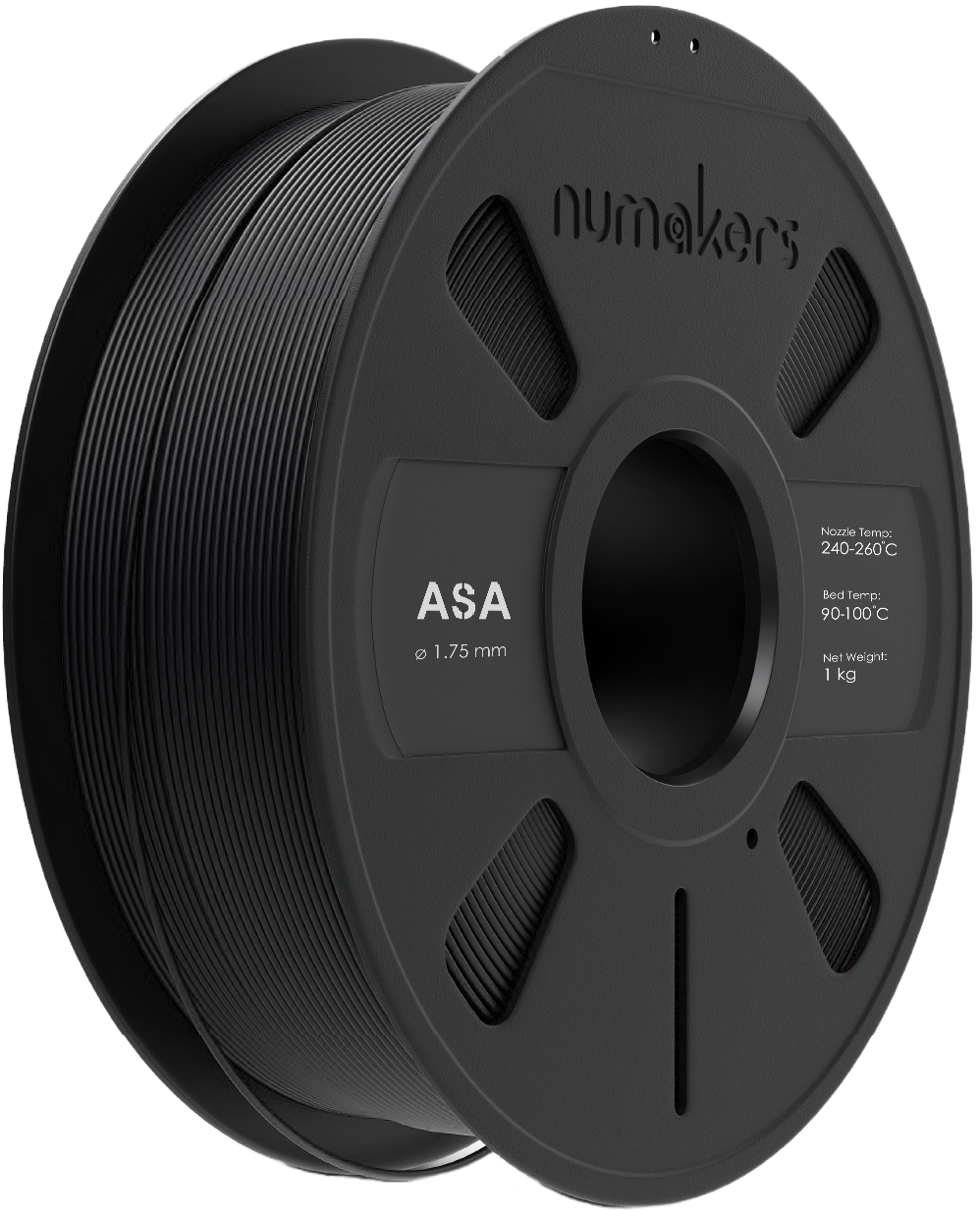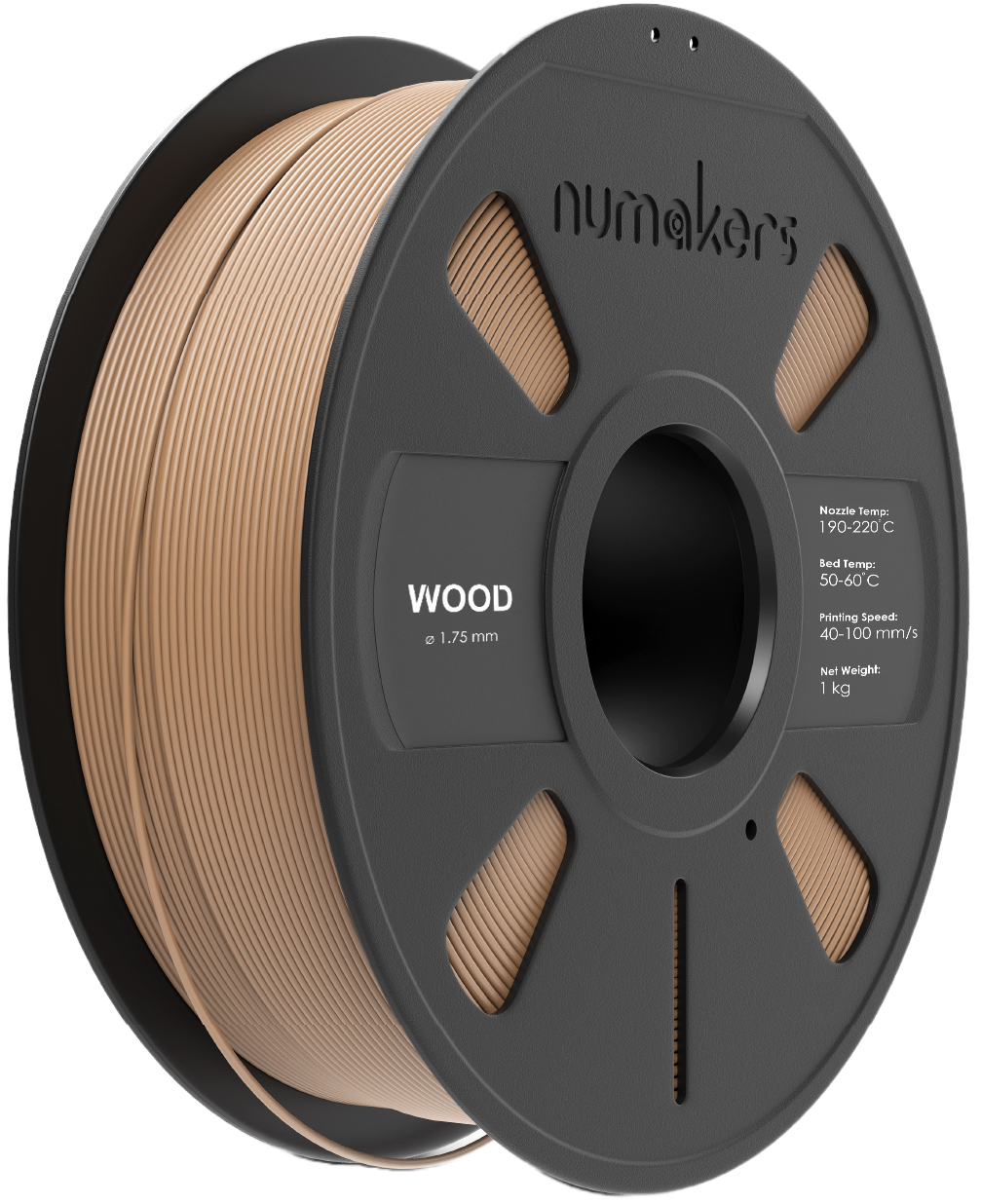Ultimate 3D printing guide for PLA CF filament
Overview
PLA CF filament is one of the most popular CF filaments for 3D printing. It is made from PLA resin and chopped carbon fiber. PLA CF filament is known for its ease of printing, strong mechanical properties, and excellent matte like finish with minimal layer lines.
Here are some of the key benefits of using PLA filament for 3D printing:
- Easy to print: PLA CF filament is one of the easiest carbon fiber filaments to print with. It has a low melting temperature and does not warp or shrink as easily as other filaments. This makes it a great choice for beginners who are still learning how to 3D print.
- Enhanced Strength and Rigidity: Infused with chopped carbon fibers, PLA CF filament provides significantly increased strength and rigidity compared to standard PLA. This makes it suitable for producing robust and durable 3D printed parts.
- Lightweight: Despite its enhanced strength, PLA CF filament remains lightweight. This is advantageous for applications where weight reduction is important, such as in aerospace and automotive industries.
- Heat Resistance: PLA CF filament offers improved heat resistance compared to standard PLA, typically adding about 10-20°C in heat tolerance. This makes it suitable for applications requiring higher thermal stability, such as under-the-hood automotive parts.
- Dimensional Stability: Provides good dimensional stability during printing and after cooling, minimizing the risk of warping or shrinking. This ensures accurate and precise prints, particularly for complex geometries.
- High Surface Quality: PLA CF filament generally produces prints with a matte surface finish and excellent layer adhesion, resulting in minimized layer lines.
How to print with PLA CF filament
- Prepare your 3D printer: Use an all-metal hotend and a hardened steel nozzle capable of reaching 245-260°C for PLA CF filament.
- Choose the right settings: PLA CF filament requires slightly higher printing temperatures than standard PLA. The recommended extruder temperature for PLA CF is 210-240°C, and the recommended bed temperature is 30-60°C.
- Load the filament: Make sure that the filament is properly loaded into the extruder. The filament should be fed through the extruder gears smoothly without any resistance.
- Start the print: Once the print is started, monitor the print closely. PLA CF is brittle in nature so ensure the filament is fed in with no sharp bends.
- Troubleshooting: If you encounter any problems during the print, such as stringing or layer adhesion issues, you may need to adjust the print settings. You can also try slowing down the print speed or increasing the bed temperature.
Here are some additional tips for printing with PLA CF filament:
- Store the filament properly. PLA CF filament should be stored in an airtight container with desiccant to prevent it from absorbing moisture.
- Clean the nozzle regularly to prevent clogging from filament abrasiveness.
General tips on printing temperature
Finding the right printing temperature for any filament is a compromise between visual looks and strength. Lowered nozzle temperatures can help to reduce oozing, stringing, and improve bridging and overhangs. However, they can also weaken the print by reducing layer adhesion.
The best printing temperature for any filament will vary depending on the printer, the filament, and the desired results. A good starting point is to use the middle of the recommended temperature range and then adjust the temperature as needed. To get the best results, it is important to experiment with different temperatures and print settings. A temp tower is a great way to test different temperatures and see how they affect the print quality. You can find numerous temp towers on Thingiverse, such as this one.
With patience and tuning, you can achieve both good visual looks and strength with the right printing temperature.
How to get PLA CF filament to stick to the bed
Most bed surfaces respond well to PLA CF adhesion. Here are some tips to get PLA CF to stick to the bed:
-
Use a clean and level bed. A dirty or uneven bed can prevent the filament from sticking properly.
-
Use a heated bed. A heated bed will help the filament to melt and adhere to the bed. The recommended bed temperature for PLA CF is 30-50°C.
-
Use a bed adhesive. A bed adhesive, such as glue stick, hairspray, or Magigoo, can help to improve adhesion and prevent warping.
-
Use a PEI sheet. A PEI sheet is a great option for printing with PLA+. PEI sheets have a non-stick surface that is compatible with a variety of filaments, including PLA CF.
General tips on bed adhesion/leveling
These are some general tips for achieving proper bed adhesion and leveling when 3D printing. The most important rule is to always ensure that the first layer of the print is perfect, with no gaps or overlaps. This can be achieved by adjusting the distance between the nozzle and the bed, which should be neither too close nor too far apart.
Different filaments may require different levels of squishiness against the bed for optimal adhesion, with PLA CF usually needing more squishing than PETG. If you experience warping during printing, check for drafts or low temperatures in your surroundings and consider using an enclosure. For complex prints with intricate details, it's recommended to lower the first layer printing speed to 15-20mm/s to ensure a good first layer.
If extra bed adhesion is needed, you can increase the hotend and bed temperature by 5-10°C and use a brim. By following these tips, you can improve the overall quality of your 3D prints.
General tips on improving visual quality of your 3D prints
Slower print speeds result in better-looking prints. You'll almost certainly obtain better results and higher visual quality if you lower your print speeds, regardless of the printer you use. Of course, there will also be a reduction in layer heights. A layer height of no more than 0.15 mm and a printing speed of no more than 50 mm/s are advised for excellent visual results.
Tune your retractions' rates and lengths to eliminate stray strings or blobs for even better visual quality. If the issue persists, try decreasing the nozzle temperature by 5°C steps.
Make sure that the part cooling fan is tuned and functioning properly. Cooling can significantly enhance the visual part quality and is necessary to address overhangs and bridging.
You can turn on "ironing" in your slicer software to provide your top layer a nicer surface polish; this will notably help PLA CF prints.






















